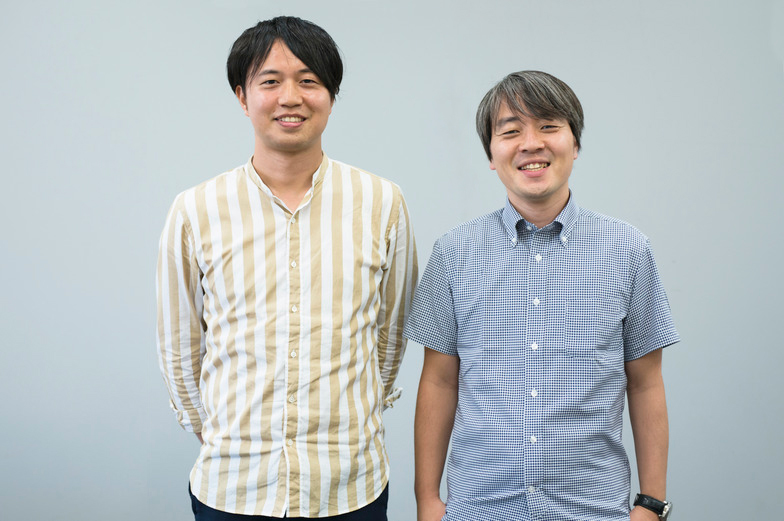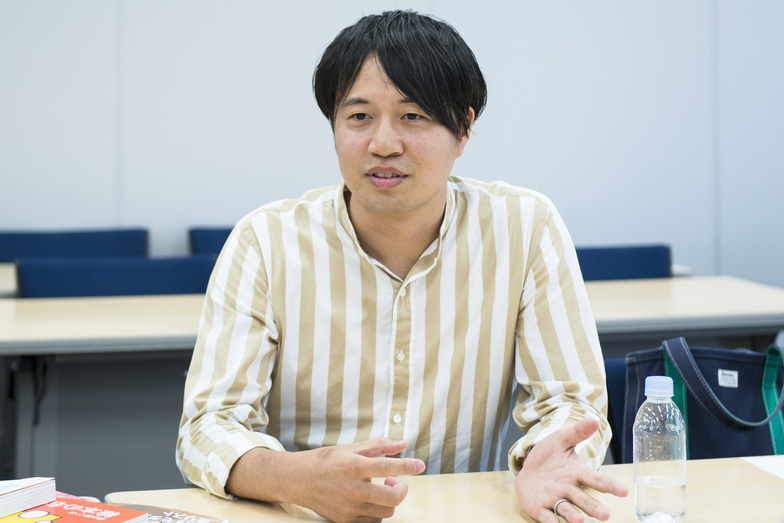As communication methods diversify, the importance of "editing skills"—the ability to process and disseminate information from a unique perspective—continues to grow. To explore the secrets behind these skills, a publisher's editor and a Dentsu Inc. creator engage in a dialogue, revealing their respective views on editing power.
This time, Kenichi Okumura, an editor at the magazine Casa BRUTUS and producer of the picture book series Tiny the Balloon Dog, and a Dentsu Inc. CM Planner, Yuta Higashihata, conversed on the theme of "editing skills."
How to connect your personal "likes" to a magazine
Higashihata: I've had the pleasure of working with Mr. Okumura several times and even going out for meals (laughs). What strikes me about him is how deeply he values his own "likes." I feel that's the source of all his ideas. Would you agree?
Okumura: That's right. As an editor, I always ask myself: Do I personally find this "likable" or "interesting"? However, simply featuring something like that might not fit the magazine's theme. So, I believe an editor's job is figuring out how to deliver those "likable" or "interesting" things. I don't start by searching for ideas within the magazine's existing framework. Instead, I begin with my own "likes" and then fit them into the magazine's framework.
That's exactly how the picture book feature came about in Casa BRUTUS, which focuses on design. It started because I had a daughter and became interested in picture books (laughs). So, perhaps the core of editorial skill is figuring out how to connect your personal "likes" to the magazine – that "bridge-building."
Higashihata: I share that feeling to some extent. With advertising, you get a brief and think about how to solve it, but often, the way I arrive at an answer is by measuring it against things I'm interested in or messages I feel are necessary. Thinking about it that way, I believe my own "likes" are definitely there.
Okumura: I absolutely love your work, Higashihata-san. That's why I asked you to create the commemorative copy for Magazine House's 70th anniversary. The phrase you came up with was, "So, what should we play next?" That line made me incredibly happy. It captured how we enjoy creating and delivering content to readers, and you expressed that very act as "play."
Higashihata: It's a tough time for magazines. But I want Magazine House editors to be the people doing "the most fun job in Japan." I wrote it to ask both the world and our inner selves: "How do we play?" in this changing era.
The future of editing lies not in digital, but in real life
Okumura: I've always loved reading credits on creative works because I believe there's always a person behind something interesting. When creating the picture book "Tiny the Balloon Dog," I researched overseas picture book creators and found many started as designers. Examples include Dick Bruna, known for "Miffy," and Eric Carle of "The Very Hungry Caterpillar."
So I thought, "Who could be Japan's Dick Bruna?" and Kenjiro Sano (※1) came to mind. Then, when I wondered who could craft a solid story, Genki Kawamura (※2) popped into my head. Both are people I deeply admire. I figured combining these two talents could create something special. From there, the three of us discussed "What should we do?" and Tiny was born. It all started at a beef hotpot restaurant in Asakusa (laughs).
※1 Kenjiro Sano (Graphic designer known for numerous advertising designs. Handled the illustrations for Tiny the Balloon Dog)
※2 Genki Kawamura (Film producer and novelist, author of works like "If Cats Disappeared from the World" and "100 Million Yen Man." Handled the story for "Tiny the Balloon Dog")
Higashihata: In commercials too, "who you shape it with" is incredibly important. Even with the same concept, the commercial can turn out completely different depending on which director you work with. When choosing a director, it's vital that they've created at least one thing you genuinely like.
Okumura: I once produced a book (*3) themed around "Turn what you love into your job," but I think "Work with people you love" is equally valid. You won't generate energy unless you're doing something fun with people you like. Honestly, I probably know more about Sano-san and Higashihata-san's work than anyone else (laughs). Finding those people and producing their work might also be part of editorial skill.
※3 "Professor Masamichi Katayama's 'Turn What You Love into Your Work'" by Masamichi Katayama (published by Magazine House)
Higashihata: In advertising too, as client challenges become more complex, you have to incorporate everyone's knowledge. The more we enter the era of teams, the more people truly matter.
Okumura: Even in this era where digital makes things spread easily, what's at the core is the product itself and the people who create it. That's precisely why people are so important. And when you find someone you admire, you naturally want to do something for them.
Higashihata: Hearing that earlier, I presented the idea that "the future of editing lies not in digital, but in the real world."
Okumura: Exactly. I've been using that phrase you gave me, Higashihata, as if it were my own all this time (laughs).
※Part 2 scheduled for publication on Thursday, July 16.






